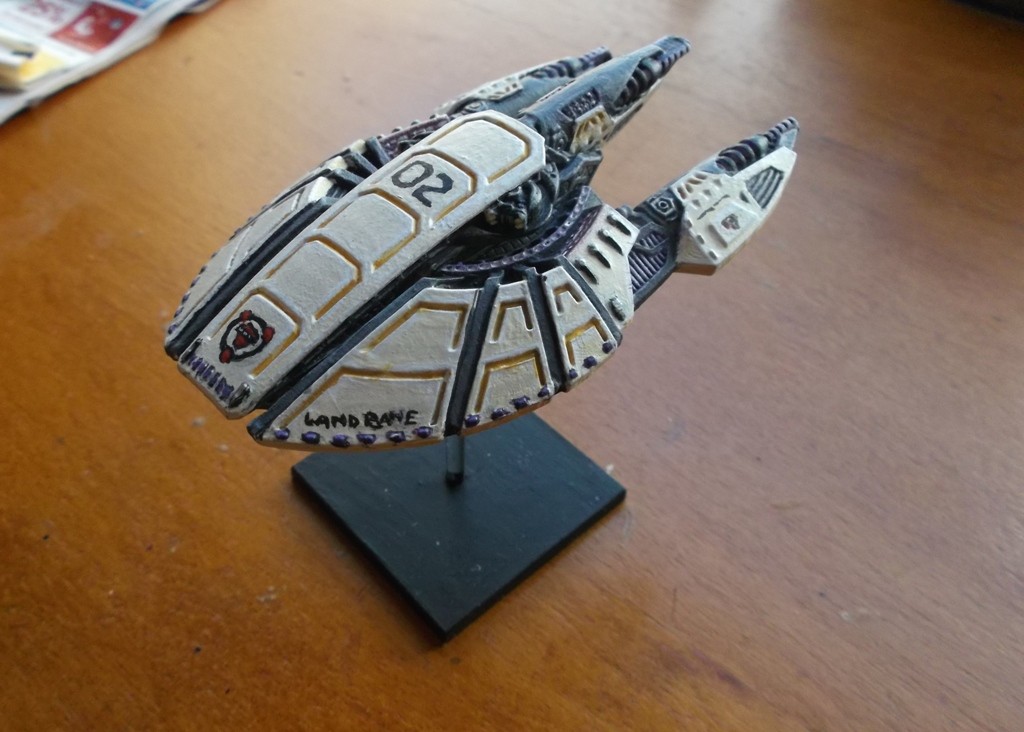This article strives to develop a coherent description of how Fold Space Drive functions in the Firestorm Armada universe. As such, it heavily relies on posts made by Spartan Alex in a thread on the Spartan Forums a few months back regarding the nature of Fold Space Drive mechanics. I have added additional details to what was provided, but I have striven to not directly contradict anything that was posted from the official source.
Introduction
The current political order of the galaxy owes it’s existence to faster than light (FTL) travel. While some races, most notably the Aquans, were able to make significant inroads into colonizing distant stars using generational sub-light vessels, it wasn’t until the arrival of safe and effective FTL drive technology that colonization, let alone trade, became a truly viable enterprise. While there have been attempts to conduct FTL travel using artificial wormholes, the difficulties inherent in such an approach meant that it was rapidly abandoned once the principles of the Fold Space Drive (FSD) came to be understood.
Basic Principles
The FSD essentially works by generating and channeling Zero Point energy via the Casimir vacuum effect. While this process is energy intensive, it does grant a vessel access to even greater sources of quantum energy that it can then use to propel itself into Fold Space, an alternate dimension where distances between objects are much closer than they are in Normal Space. Traveling through Fold Space allows a vessel to cover interstellar distances in a matter of days or weeks, instead of decades or centuries.
Navigational Accuracy
A great degree of accuracy is needed to ensure that a ship enters and exits Fold Space in a controlled and precise manner; if a vessel exits too close to a star or other celestial body, it might be destroyed in a collision. However, if a vessel exits too far from its objective, it could take many weeks to travel the rest of the way to its destination (or, more likely, a second transit via FSD). Navigational accuracy degrades proportionally with the length of the jump, meaning that crossing longer distances in a single jump is riskier. A solution to this loss in accuracy is a Jump Beacon that broadcasts signals that vessels in Fold Space can “home” on. Such beacons are relatively complex, and therefore represent significant investments in resources. Therefore, they tend to be placed along major transit routes and defended by both fixed and mobile defenses.
Jump Range
The maximum range of a vessel’s FSD is mainly a function of the drive’s size and sophistication, much as the atmospheric aircraft of ancient Terra were often limited in their performance by their powerplants. It is impossible to push a drive past this limit, just as it proved impossible for a piston engined propeller driven airplane to break the sound barrier. As a result, the general trend over the centuries has been that the maximum jump ranges of shunt-capable vessels has steadily increased as refinements are made to each race’s understanding of Fold Space mechanics. Older vessels, as well as civilian vessels that are designed with lower performance requirements than warships, often have shunt ranges that are significantly shorter than the state of the art allows.
Sensors
A vessel traveling in Fold Space generates a quantum FSD “wake” in Normal Space, due to the Fawcett effect. This wake can be detected by sensors at significant distances, and can even reveal the vector of a vessel’s shunt. As a result, all major space-faring powers have studded their borders with listening posts to provide early warning of any hostile forces crossing into their territory. Recent efforts to develop active stealth and cloaking technologies have succeeded in greatly reducing the wake detection ranges for vessels that are equipped with this technology. This has the side effect of reducing the jump range of that vessel, however, due to the additional fuel required to power the stealth equipment as well as the FSD.
Communications
In the early days of FSD travel, FTL communication was impossible. This resulted in a reliance on courier ships and small shunt-capable messenger probes to carry information from one star to the next. This cumbersome system limited the volume one power could effectively control. However, a breakthrough was made when it was discovered that a specialized variant of a FSD could “tunnel” electromagnetic signals through Fold Space to a distant destination in less time than it took even the fleetest messenger probe to shunt there. This form of communication, while not instantaneous, was much faster than the old system. Thanks to the lack of mass, communications made in this manner appear to be immune to the Fawcett effect, and as such are undetectable. Installations for sending and receiving these signals are often vast complexes, due to the power generation and equipment required. The Terran Satellites are perhaps the most famous examples of these types of structures.
Ships within relatively close range of each other in Fold Space are able to communicate using their Normal Space communications systems, due to the vessels being within the same dimensional frame of reference. It is impractical for most ships much smaller than a battleship to carry the equipment necessary to transmit signals into and out of Fold Space, again due to the size of such transceivers and the power needed to operate them. As a result, the stellar navies of most powers typically operate such large ships as command and control nodes for fleets of smaller vessels.
Source: http://community.spartangames.co.uk/index.php?/topic/14907-firestorm-armada-science-questions/

